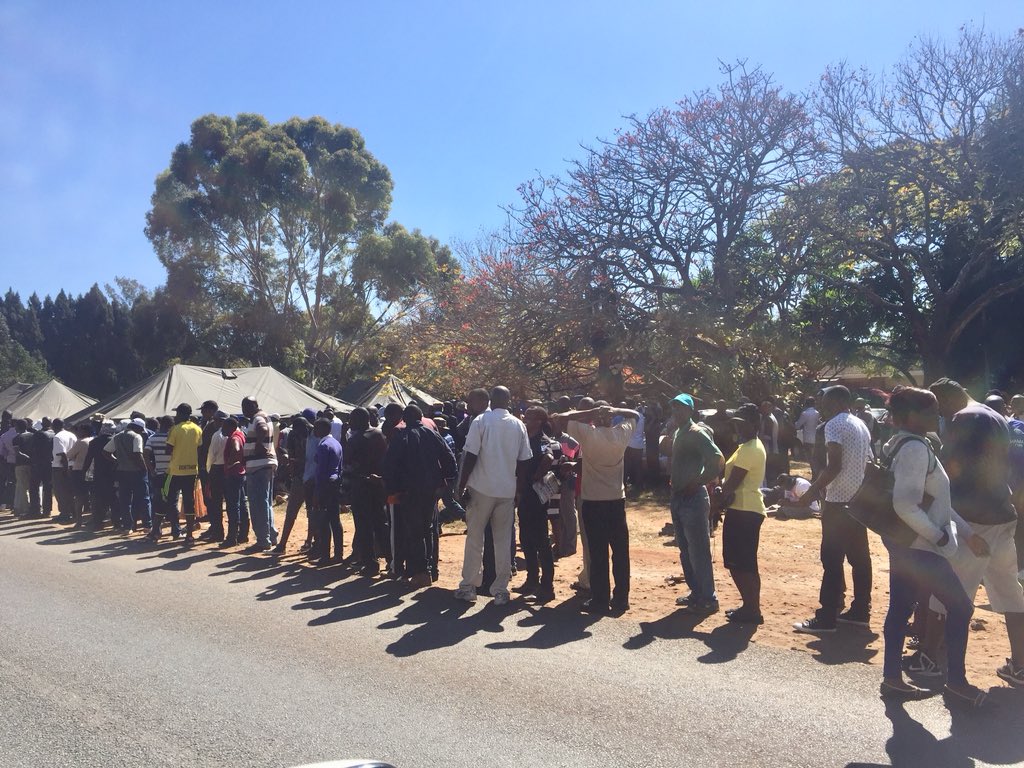By Dumisani O. Nkomo
The results of the 2018 Harmonised elections provide an insight into voting trends and patterns which are useful for understanding Voter Psychology and the factors that influence how and who the electorate vote for. There are useful lessons for the contestants as well as other players such as the electoral management body [Z.E.C], observers, civil society and the general public. The two key lessons gleaned from this election are that the Zimbabwean electorate is binary in its choice of candidates and there is a clear dichotomy between the urban electorate and the rural electorate.
Bi Focal and Binary Voting
The leader of the People’s Rainbow Coalition Dr Joice Mujuru correctly noted that Zimbabwe is a two party state where voters vote in a binary manner. Although there were over 120 political parties that contested in the elections it was just two parties that garnered the majority of votes where the National Patriotic Front was the only other Party able to grab a seat. This is a clear indication that Zimbabwe is not ready for small parties and independent parties. This is regardless of the quality and calibre of candidates from alternative parties.
Individual popularity of candidates did not translate into garnering votes. This indicates that when Zimbabweans vote, what is important to them is the bigger and broader institution which they either have a sense of belonging to or be able to bring to account. This explains why the likes of Evan Mawarire who at the height of the 2016 shutdown attracted the attention of thousands of Zimbabweans failed to win in a local government election losing to the equally able Jacob Mafume.
The list is endless with firebrands such as Fadzai Mahere, Jesse Majome also not making it in spite of incredible social media presence and digital footprint. This of course also informs another important observation that social media presence does not necessarily translate into votes. Importantly this means that the Zimbabwean voter whilst recognising the importance of the individual contribution of activists are still prone to vote for big parties with the ability to “conquer or retain power”.
In the mind of the urban voter especially, a candidate or party must either be able to conquer or retain power and outside of that smaller fringe parties stood and stand very little chance. In essence therefore it can be concluded that Zimbabwean voters have a bifocal voting lens which chooses to select any of the big two parties.
This is also evidenced in the presidential elections where of the 23 candidates only Chamisa and Mnangagwa accounted for almost 95 % of the vote with the other 21 candidates sharing less than 5 % of the presidential vote.
Even in the U.K, there are two main parties which are dominant namely the Conservatives and the Labour Party with the Liberal Democrats emerging in the last decade. In America it is largely a contest between the Republicans and the Democrats. It must be noted however that in both these two countries there is robust internal democracy which allows for competition within the parties.
It will take a political evolution of ten to fifteen years for the Zimbabwean voter to become multi focal in their electoral choices. However, the bifocal and binary voting trends and patterns may continue well into the future with people then by virtue of political osmosis gravitating towards bigger political formations such as the M.D.C Alliance or ZANU P.F.
This means the two parties have to be ready for an influx of new cadres trying to find credence and relevance within bigger formations as opposed to affiliation to smaller parties who may due to the obtaining bi focal political culture be unable to attract new cadres. The current first past the post system favours bigger parties and a system of full proportional representation would have been conducive for smaller interest based and regional parties.
The Rural – Urban Dichotomy
The results also clearly demonstrate that there is a dichotomy between the rural and urban electorate. ZANU P.F and Emmerson Mnangwagwa clearly dominated the rural areas whilst Nelson Chamisa dominated urban areas.
This means there is need to understand the psyche and political electoral behaviour of the rural populace if for example Nelson Chamisa and the M.D.C Alliance is to stand any chance in the next elections.
The rural voter is most probably concerned about livelihoods issues, issues of access to water, irrigation, food, cattle and so forth. This is accentuated by the fact that whilst basic geography dictates that in development patterns there is movement of people from rural areas to urban areas in Zimbabwe this has not been the case due to economic stagnation.
There must be a significant investment by the opposition in the future at understanding the rural voter and being relevant to the rural voter.
